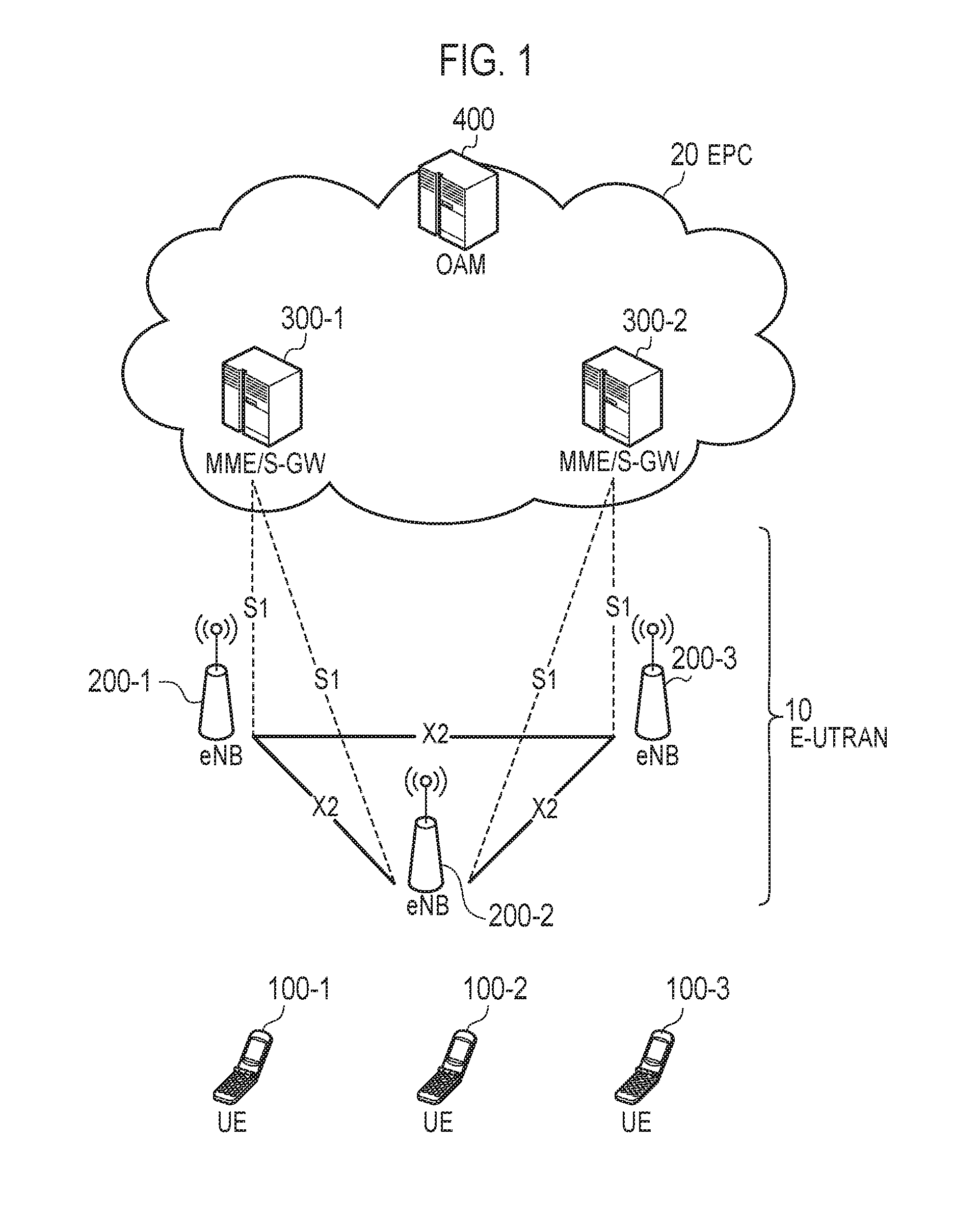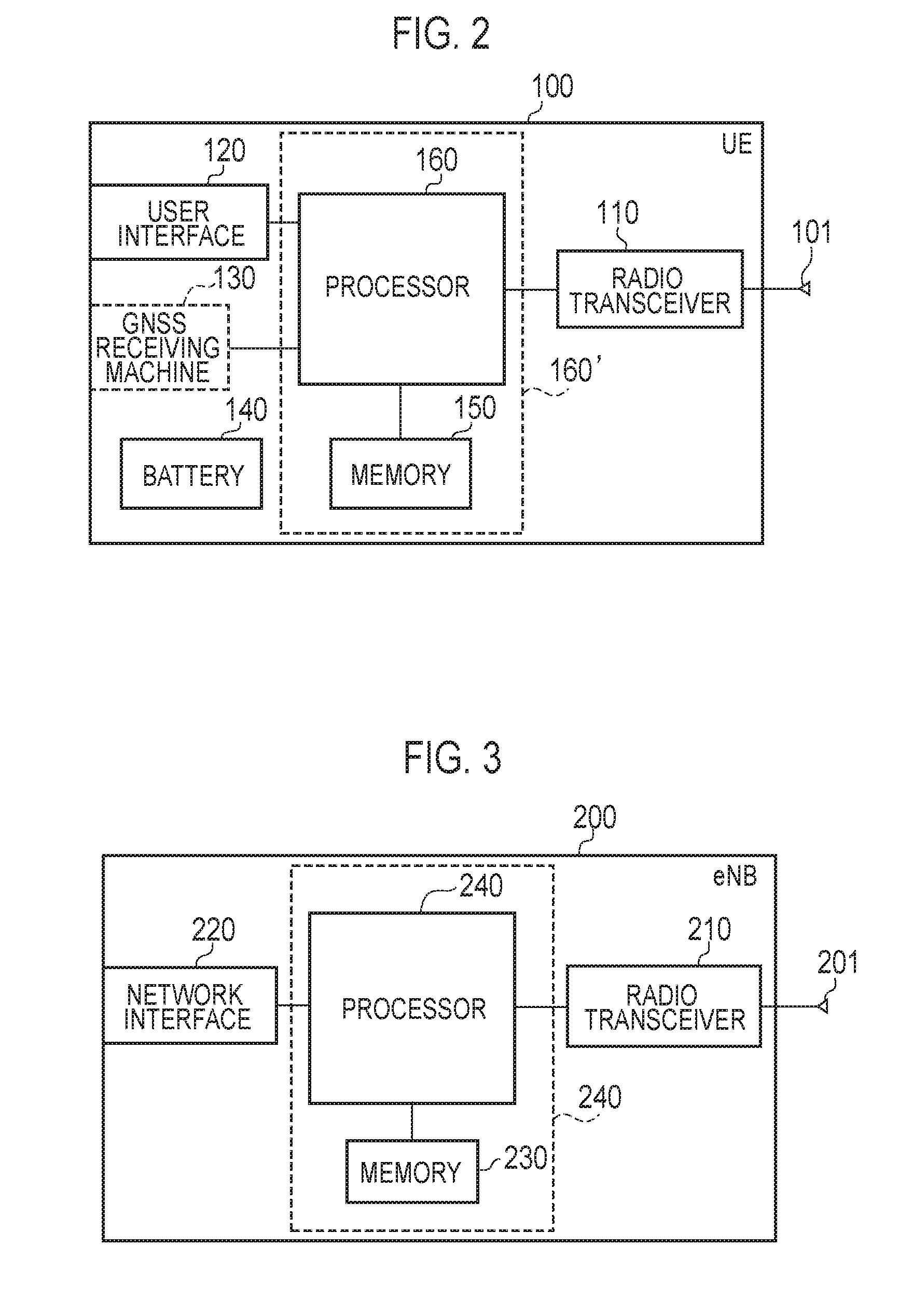User terminal and base station
a user terminal and base station technology, applied in the field of user terminals and base stations, can solve problems such as interference, and achieve the effect of preventing interferen
- Summary
- Abstract
- Description
- Claims
- Application Information
AI Technical Summary
Benefits of technology
Problems solved by technology
Method used
Image
Examples
embodiment
Overview of Embodiment
[0021]A user terminal according to an embodiment is a user terminal configured to transmit, to a target cell, a random access preamble signal for establishing an uplink synchronization with the target cell when a handover procedure from a source cell to the target cell is performed. The user terminal comprises: a controller configured to perform control of omitting transmission of the random access preamble signal to the target cell when a base station that manages the target cell receives an uplink signal from the user terminal by CoMP in which a plurality of cells including the source cell and the target cell cooperate with one another to perform communication before the handover procedure is performed.
[0022]The user terminal according to the embodiment further comprises a receiver configured to receive, from the source cell, radio resource assignment for transmitting, to the target cell, a connection complete notification indicating that a connection with th...
first embodiment
Summary of First Embodiment
[0133]In the present embodiment, the UE 100 (controller) omits the transmission of the random access preamble signal to the cell 250-2 when the eNB 200-2 that manages the cell 250-2 receives the uplink signal from the UE 100-1 by the CoMP in which the cell 250-1 and the cell 250-2 cooperate with one another to perform communication before the handover procedure is performed. Accordingly, the UE 100 does not transmit the random access preamble signal, thus making it possible to prevent occurrence of interference based on the transmission of the random access preamble signal. Further, when performing the CoMP in which the cell 250-1 and the cell 250-2 cooperate with one another to perform communication, the UE 100 is present at the cell-edge of the cell 250-1 and the cell-edge of the cell 250-2. Therefore, a timing of receiving the uplink signal from the UE 100 is substantially coincided in the eNB 200-1 and the eNB 200-2. Therefore, even when a timing of tr...
second embodiment
[0141]Next, by using FIG. 11, a mobile communication system according to a second embodiment will be described. It is noted that a description will be provided while focusing on a portion different from the above-described first embodiment, and a description of a similar portion will be omitted, where necessary.
[0142]FIG. 11 is a sequence diagram showing an operation example of the mobile communication system according to the second embodiment.
[0143]In the above-described embodiment, the cell 250-1 and the cell 250-2 perform the CoMP in an uplink, and do not perform the CoMP in a downlink. In the present embodiment, the cell 250-1 and the cell 250-2 perform the CoMP not only in an uplink but also in a downlink. Specifically, by the CoMP in the downlink, the UE 100 receives a downlink signal from the cell 250-1 and the cell 250-2 by using the same radio resource.
[0144]As shown in FIG. 11, steps S301 to S310 correspond to steps S101 to S109 and S111 of the first embodiment. That is, i...
PUM
 Login to View More
Login to View More Abstract
Description
Claims
Application Information
 Login to View More
Login to View More - R&D
- Intellectual Property
- Life Sciences
- Materials
- Tech Scout
- Unparalleled Data Quality
- Higher Quality Content
- 60% Fewer Hallucinations
Browse by: Latest US Patents, China's latest patents, Technical Efficacy Thesaurus, Application Domain, Technology Topic, Popular Technical Reports.
© 2025 PatSnap. All rights reserved.Legal|Privacy policy|Modern Slavery Act Transparency Statement|Sitemap|About US| Contact US: help@patsnap.com



